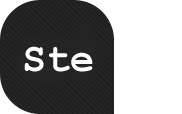To make menus and links simpler you have to think like a
customer. You also have to reduce the number of links and focus
on the task at hand.
If you visit the BBC homepage and choose “Sport” you are brought
to a page about sport. Just sport. The critical first screen is
all about sport. No links to news or weather or business. Just
sport. If you click on Football you arrive at a page that’s just
about Football. Just Football. Not cricket. Not rugby. Not golf.
Just football. If you click on “Premier League” you get to a
page dedicated to the Premier League.
This is not web design. It’s web management. It’s about
eliminating all choices that are not connected with the
customer’s current task, which in the above example might be:
Find out the latest news about the Premier League.
Some time ago, if you looked at BBC pages you would have found a
common navigation going across the top of them: Home, News,
Sport, Radio, etc. Not so anymore. The BBC has a clearer,
simpler, more focused set of pages. Focused on the task at hand,
rather than the task that might be.
Web teams are often plagued by what-if exception-based
navigation design thinking. “What if the person on the Premier
League page is in India and really wants to know if Drop Dead
Gorgeous is on tonight?” Well, tough. They’re going to have to
go back to the homepage.
Web teams need to toughen up. They need to make tough decisions.
Putting every piece of content you have on your website serves
nobody but confuses and annoys everybody. I’ve often heard
customers say: “Yeah, it’s on the website alright. Just try
finding it!” Cluttering your pages with lots and lots of links
that are worded with organization-centric language (jargon, tool
names, branding terms) is truly terrible design and management.
Placing irrelevant or distracting cross-links sends people in
the wrong direction, wastes their time and increases their
frustration.
Remember the Amazon pages some years back? They had lots of
links at the top of the page that followed you around the site.
Links like: Kitchen, Software, Electronics. Doesn’t happen
today. You just get one big link near the top right-hand corner:
“Shop All Departments.” The more you drill down through the
site, the more the navigation focuses. It focuses, based on the
decisions you have made, to point you forward. So, if you’re in
“Bathroom Accessories” the links are for: Bathroom Mirrors,
Bathtub Accessories, Scales, etc.
One of the most common and most confusing forms of navigation
around is the one that brings previous levels with it as you
drill down. SAP is just one of the companies that uses this
approach. Let’s say you click on Solutions and keep clicking
down until you get to “SAP ERP Features and Functions: End-User
Service Delivery.” If you scan down the left navigation, you
will see a link for “Services.” If you click on that link you
don’t get more on ERP-related services, but rather you get sent
to the homepage for SAP overall services.
Menus and links need to be designed in the context of the task
the customer is trying to complete. That means stripping away
higher-level options and creating links that point forward based
on the task at hand.
mailto:gerry@gerrymcgovern.com

